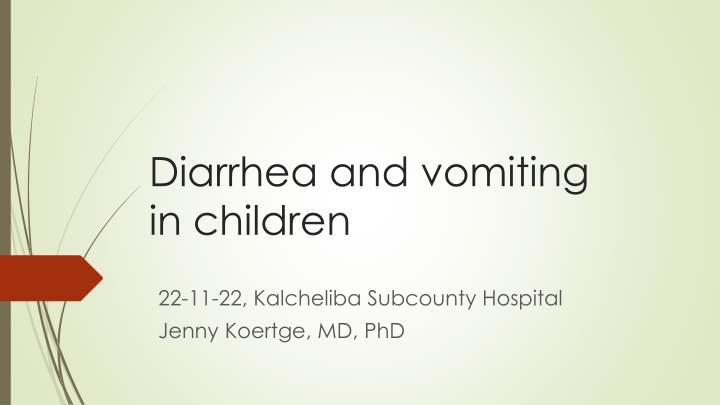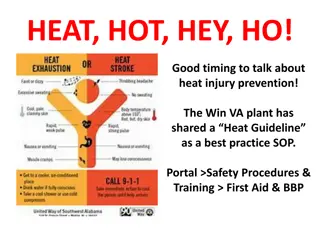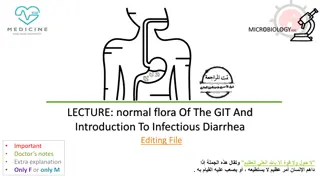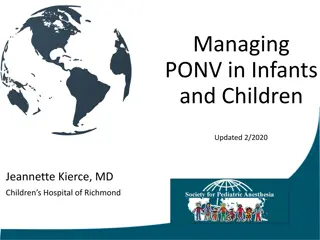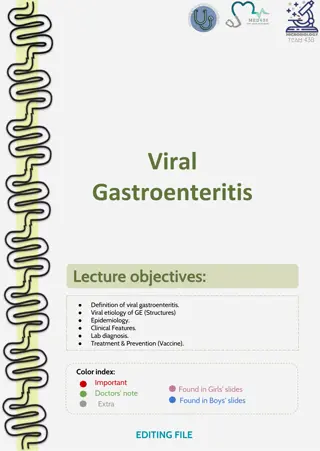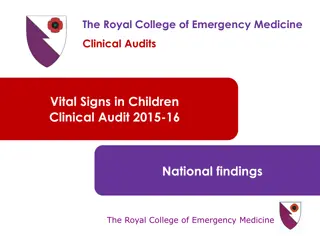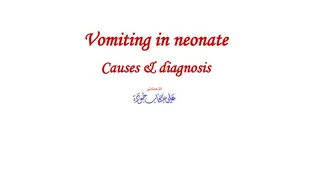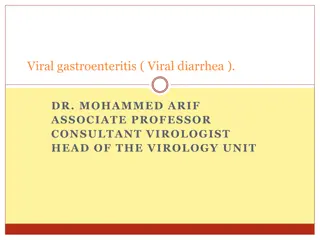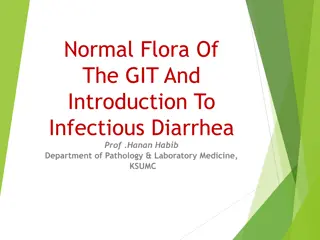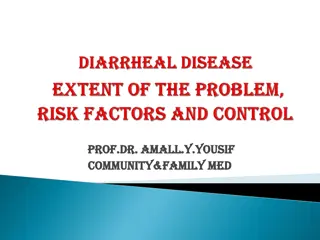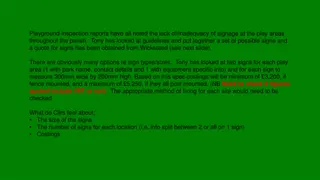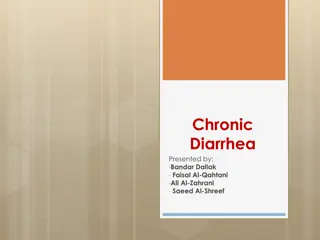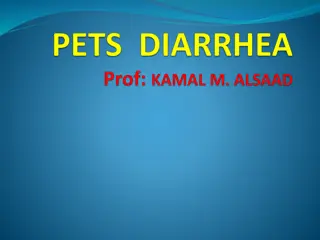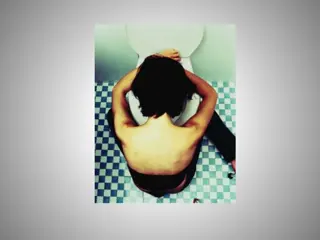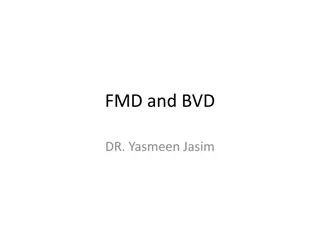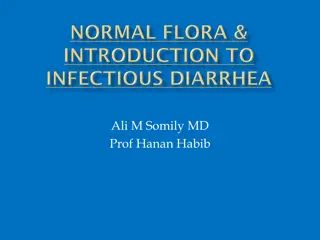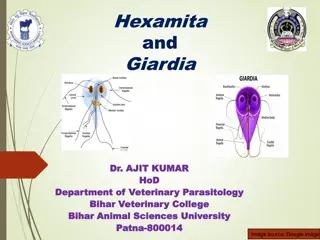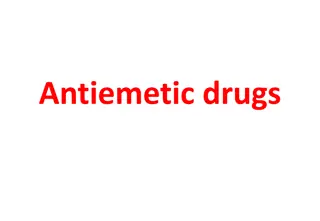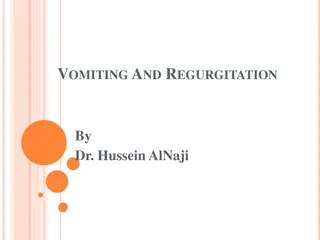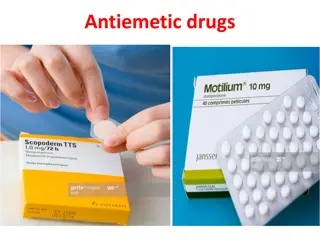Diarrhea and Vomiting in Children: Causes, Signs, and Rehydration Guidelines
Acute diarrhea and vomiting are common issues in children, often leading to dehydration and requiring prompt intervention. This comprehensive guide covers the possible causes, clinical signs of dehydration, and a practical approach to rehydration, emphasizing the importance of timely management to prevent complications. Learn about key strategies such as bolus dosing, rehydration over 4 hours, and maintenance dosing to effectively address these conditions in pediatric patients.
Download Presentation

Please find below an Image/Link to download the presentation.
The content on the website is provided AS IS for your information and personal use only. It may not be sold, licensed, or shared on other websites without obtaining consent from the author.If you encounter any issues during the download, it is possible that the publisher has removed the file from their server.
You are allowed to download the files provided on this website for personal or commercial use, subject to the condition that they are used lawfully. All files are the property of their respective owners.
The content on the website is provided AS IS for your information and personal use only. It may not be sold, licensed, or shared on other websites without obtaining consent from the author.
E N D
Presentation Transcript
Diarrhea and vomiting in children 22-11-22, Kalcheliba Subcounty Hospital Jenny Koertge, MD, PhD
Acute diarrhea Common chief complaint in childrens clinics Definition: 3 or more watery stools/24 h, chronic if >14 days In Kenya 2nd leading cause of death among children 17% Accounts for 21% of deaths for children under 5 (KDHS 2008/09) ORS and Zink tablets can reduce morbidity by 93% - underused nationally
Possible causes of vomiting? Infection Intoxication Medication side effects Ketoacidocis Elevateded ICP Concussion Pregnancy Obstruction of the gut Dysfunction of the balancesystem Worry Migraine
Clinical signs of dehydration? Regardless of the cause, important to assess!
Rehydration - think 3 steps: 1. Need to restore circulation? - give bolus dose 2. Rehydrate over 4 hours, account for at least 5% fluidloss 3. Give maintenance dose = basal need + replace losses over 24 hours
1. Bolusdose if in shock/preshock Start with 20 ml/kg iv fluid (Ringer Lactate or NaCl) give asap. Often with a syringe Evaluate repeat if necessary
2. Rehydrate over 4 hours Give 5% of bodyweight Ringer Lactate = 12,5 ml/kg/h eg. 5 kg = 250 ml, 10 kg = 500 ml ORS 5 ml/5 min, IV or naso-gastric tube Evaluate, child should get alert and pee repeat if still dehydrated - check sodium first!
3. Maintanence over 24 hours Ringer lactate-glucose 5% (RL-G5%) preferred fluid Basal need Holliday-Segar formula + losses over 24h
Example child 7 kg If bolus (20ml/kg): 140 ml stat Rehydrate over 4 hours (12,5 ml/kg/h): 350 ml ORS or iv Evaluate dehydration status, check sodium repeat if neccessary Maintenance fluid over 24 hours (Holliday-Segar): 700 ml + estimated losses according to weight loss, eg if 10% = 700 ml 700 ml basal need + 700 losses = 1400 ml total over 24 h
Hyponatremia sodium<125 mmol/l If correcting dehydration too rapidly Shift of water from the bloodstream to intracellular space Cerebral oedema Symptoms: loss of conciousness, convulsions, haeadache, nausea, vomiting, irritability, apnea Give bolus of 3% Nacl (2 ml/kg, max 100 ml) Over 10-20 min Add 10 ml Natriumchloride (4 mmol Na/ml) to100 ml 0,9%NaCl.
Hypernatremia sodium > 150 mmol/l Larger loss of water than salt Shift from intracellular space to the bloodstream Mostly children <2 r due to high basal water turnover, kidneys are inept at concentrating, inability to control their own fluidintake Risk convulsions, sinustrombosis, intracerebrala bleedings and in worst case death Check body weight often large decrease Irritable, jitteriness, sleepy Often very thirsty
Antibiotic use Antibiotic should only be given if proven - cholera (Erytromycin) - Shigella dysentery (Ciprofloxacin) - Amoebasis or giardiasis (Metronidazole = Flagyl) Not proven effective otherwise and can do more harm than good Months before normal GI-flora is restored Slow down antibiotic resistance! Source: Policy guidelines Kenya Ministry of Health, 2014
